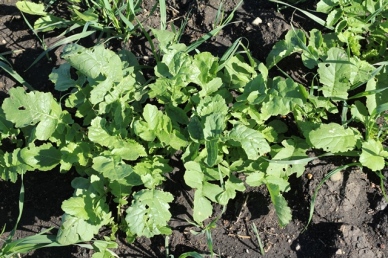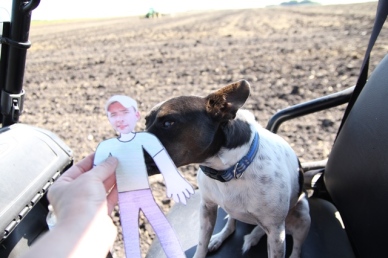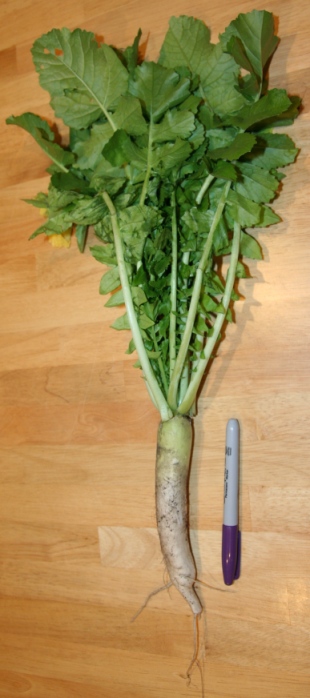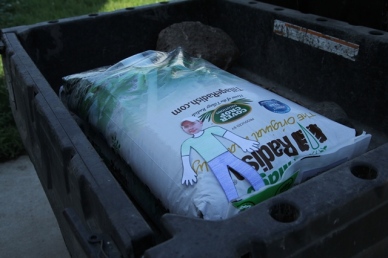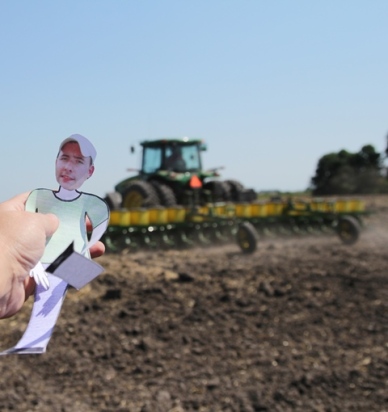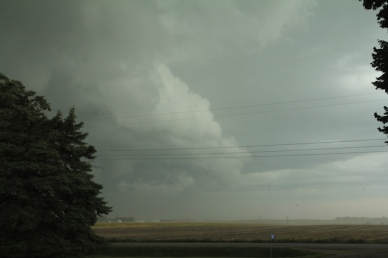Jonathan and I went on a little farm tour a few weeks ago, and stopped to check on the fields with cover crop residues. We use oats, which we spread on the field with a spin spreader, and Tillage Radish, which is planted with the row crop planter. This past fall had perfect growing conditions for the cover crops, so they grew really well.
We have a three crop rotation on our farm. Each year one-third of our acres are planted into corn, one-third is soybeans, and one-third is a small grain such as wheat. After the wheat is harvested, we apply hog manure to that land for the corn to use the following year. After the manure is incorporated, we plant our cover crop. The root systems of the oats and Tillage Radish are very different, but work in harmony to improve soil health. The oats stimulate microorganisms in the soil that digest the organic matter making the nutrients available for the corn to use in the spring. Oats are also good at suppressing weeds. The Tillage Radish tap root breaks up compacted soil, and creates water channels that help the soil to hold water instead of the water running over the top. Both the oats and Tillage Radish are good at storing nutrients from the manure in their stems and roots, which are released when the organic matter is worked into the soil in the spring.
Here you can see how the stems from the oats formed a thick layer over the soil. This field had no wind erosion this past spring, even though we have had some extremely windy days. The soil underneath was cooler and wetter than our fields without a cover crop.
We were looking for some Tillage Radish residue and the holes they leave behind. The end rows in this field only had Tillage Radish planted, due to timing issues. It also makes for a good experiment to have just the radish in areas that typically suffer from compaction issues. We found a few rows where the tops of the radish were above ground, so we could look at how they decompose.

You can see how Jonathan was able to tease the radish out of the ground. The top of the radish was exposed through the winter, and was a little spongy when squeezed.
You can see how part of the root has decomposed, yet some remained. This was the part just under the soil line. It was much softer than the top of the plant.
Here I was trying to see how deep the root channel was. I couldn’t touch the bottom. The root channels vary in size depending on how close the radishes were planted, and how large they grew.
This hole wasn’t as big in diameter as the other one, but was very deep. When it rains, these holes give the water a place to go instead of the rain just running over the top of the soil. It is one reason we use our corn planter to plant the Tillage Radish in rows. When we plant corn over the same rows in the spring, the corn benefits from the moisture held in the soil.
Using a cover crop has become an important part of our rotation. We are seeing the benefits in increased soil organic matter, better water holding capacity, and better erosion control. We are also seeing benefits to the environment in wildlife activity (deer love the tillage radish), water holding capacity, and erosion control. A true win win!






